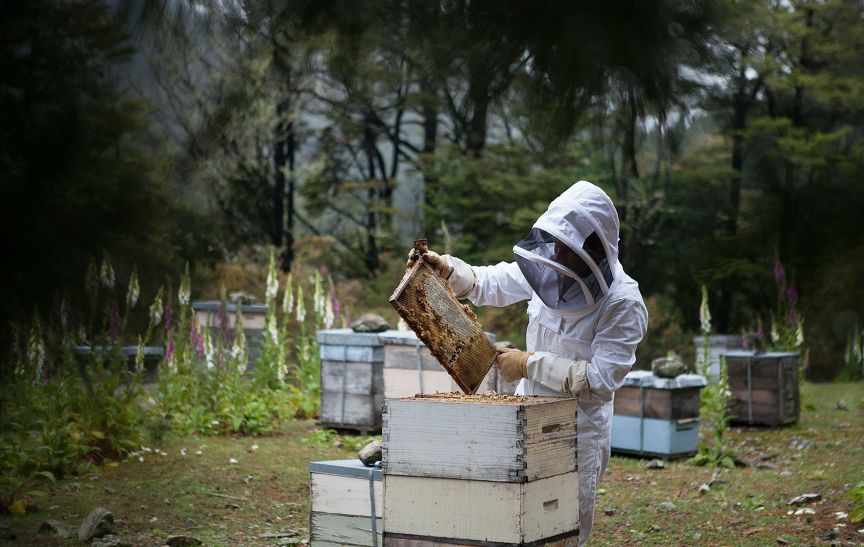Understanding Tracheal Mite (TM) and Disease
The tracheal mite, also known as Acarapis woodi, is an invasive hive parasite. Discovered in 1919 on the Isle of Wight, the mites cause a disease called Carine disease or Acariosis, which is deadly to bees. Without treatment, it can bring down an entire colony.
The tracheal mite is one of the most widespread honeybee diseases in the world. Fortunately for Australian beekeepers, they have not yet reached our shores – but it’s still smart to understand the disease in case that changes.
What we know about tracheal mites
Tracheal mites, as the name suggests, live and grow inside the trachea (throat) of honeybees. When infested with mites, a bee’s trachea appears darkened and full of darker browns spots, scar tissue, and tough lesions. At times, the trachea may even go black.
The female mites, responsible for laying eggs in the bee’s trachea, tend to favour bees less than four days old, particularly newly-hatched bees. This drastically shortens the bee’s lifespan and flight activity.
The process from infestation to disease is relatively slow. The female mite will lay eggs inside the bee’s trachea that will hatch between 10-15 days later, producing adult mites. These mites pierce the walls of the trachea so they can feed on the bee’s haemolymph (plasma-like fluid). Eventually, the mites fill-up the airway and block the bee’s oxygen flow resulting in suffocation.
Symptoms of tracheal mite
Although dead bees with discoloured trachea are the most obvious signs of infestation, there are some subtler symptoms to look for.
Physical appearance
You may notice that an infected bee’s wings are disjointed or out of place. The wings may be sitting at 90 degrees from the abdomen or be pointed directly outwards — this is known as ‘K wing’.
Physical behaviour
Dysentery can be a major symptom of tracheal mite. Your bees may begin to leave their bodily waste inside or just outside of the hive. Keep note if this is not usual for your bees.
The colony may begin swarming excessively or show signs of becoming lethargic. Even when it seems like bees are taking flight each day, a large percentage may still be in the hive. The reproduction rate of bees in your hive may decline too.
Seasons can change how the parasite and disease present. In warmer months, infected bees may appear strong and agile. As cooler winter temperatures roll in, the hive numbers can drop rapidly as a result of the shortened life span. Be alert, as it could result in just the queen and a small number of bees left.
How to treat tracheal mite
Fortunately, there are two low-risk treatments for this parasite. They don’t require a lot of effort and are harmless to the bees.
Grease patties
This is a natural option that includes two ingredients that a lot of households will have on hand. Combine one part vegetable shortening or oil with two to three parts sugar to make a paste-like mix. Shape it into patties, just like a burger. Place one patty on the top bars of the brood chamber – this should last around one month.
When a bee feeds on the patty, a layer of oil will eventually cover its whole body. The grease interrupts the mite's lifecycle as they can no longer climb onto the bee or cling to its hair. Eventually, the mites die as they can’t attach to new host bees.
Menthol
Using menthol to treat tracheal mite is simple, but there are a few rules. You should use menthol during a low nectar-flow period or when the honey has just been harvested — this stops menthol-flavoured honey from being produced.
The menthol acts as a natural fumigant. As the menthol crystals melt, a vapour is released and the bees will breathe it in. The vapour kills adult mites but not eggs or larvae so it’s important to keep the menthol treatment going for a minimum of two weeks (the development time for a mite).
The appropriate dosage is a 50–60-gram packet of menthol crystals or pellets. If your maximum temperature is less than 15 degrees Celsius, then place the menthol packet on the top bars of the brood chamber. If the maximum temperature is above 15 degrees Celsius, place the packet on the bottom board.
To make sure you get every mite, combine the grease patty and menthol methods.
How to prevent tracheal mites
As with many bee diseases, preventing tracheal mites from entering your hives relies on scrupulous hygiene and avoiding cross-contamination – particularly if you live in an area where the mites are common.
This means:
- Avoiding contact with infected hives
- Thoroughly cleaning any second-hand equipment before use
- Using robbing screens and other methods to prevent foreign bees from entering your hives
- Taking care to buy bees from reputable sellers
The cleaner and healthier your hives, the easier it will be to stave off tracheal mites and other potential invaders.
Want to know more about hive diseases?Take a look at our articles about common honeybee pests.

